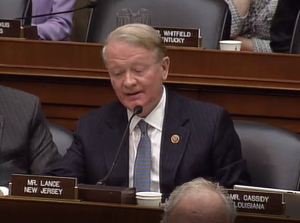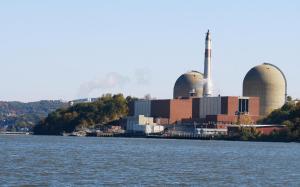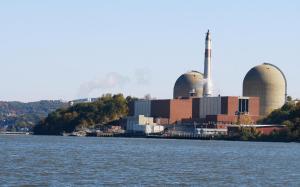
Indian Point
By Roger Witherspoon
The unprecedented degradation of critical baffle bolts in the Indian Point 2 reactor has triggered an extensive investigation by federal officials seeking to learn why the problem was so severe, why systems designed to detect loose metal objects failed, and whether the plant has a specific flaw that could compromise its ageing management program.
The discovery in March during a routine fuel change that more than 27% of the stainless steel bolts needed to channel cooling water through active nuclear fuel rods were broken, distorted or “missing” has prompted the Nuclear Regulatory Commission to demand answers from Entergy, which owns Indian Point 2&3 in Buchanan, NY. The NRC will first review Entergy’s Licensee Event Report, due within a week, on the degradation problem and regulators insist they will not allow the plant to resume operating until critical questions are answered.
“The analysis to be performed by Entergy regarding the bolts,” said NRC spokesman Neil Sheehan “will need to demonstrate that the baffle-former plates would remain in place even if a certain number of bolts failed. And those criteria will include the safety margins. We will review Entergy’s analysis and plans before deciding if the company’s proposed course of action is acceptable. Part of those evaluations will include whether it intends to assess the baffle-former bolts in Indian Point 3 in the near-term or several years from now.”
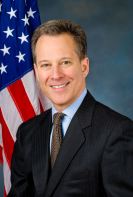
An escalating series of problems began with an enhanced inspection of the interior of the Indian Point 2 reactor during a scheduled refueling. New York Attorney General Eric Schneiderman had insisted in a series of legal actions starting in 2007 that Entergy go beyond the visual inspection by a camera lowered into the radioactive coolant and utilize more intensive ultrasonic testing. That revealed that 227 of the 882 bolts, more than one in four, were damaged due to the intensive wear and tear in the interior. That is a failure rate never recorded in any reactor in the world. And loss of the bolts and the directed coolant could lead to a fuel meltdown.
An Expanding Problem
But as Entergy began the slow process of removing each two-inch long, stainless steel bolt using robotic arms and cameras under 40 feet of water, there were additional developments impacting the NRC’s urgent need to find the reason for the massive failure:
- At least four additional bolts that were not detected by the ultrasonic examination broke while work was being done on the identified, degraded bolts. Sheehan said “the ultrasonic testing is not considered to be 100% foolproof.” But its rate of inaccuracy is not known and there is no way to tell what other bolts or critical internal structures may be poised to break inside the reactor. Ultimately, Entergy found it necessary to replace an additional 50 baffle bolts, bringing the total to 277, meaning one in three critical bolts was thought to be fatally degraded.
- Alarmed by conditions in Indian Point 2, New Jersey’s energy utility, PSEG Co. conducted an ultrasonic scan of its baffle bolts during an outage last month for their Salem 1 reactor. Both Salem 1&2 had previously passed the visual inspections via underwater camera and an ultrasonic scan was not scheduled before 2019. But the scan showed 18 baffle bolts were degraded out of 832, or 2.1%. It was the first time degraded baffle bolts had been found in Salem 1, though the percentage of worn-out bolts was in keeping with industry projections for ageing systems. It added pressure on Entergy to show a circumstance specific to Indian Point 2, and not a design flaw affecting both plants.
- The issue of water jetting, stemming from what had been regarded as an isolated incident in 2014, has now been added to the potential problems facing Indian Point 2 which may need to be addressed in the ongoing ageing management program. In the North Anna nuclear reactor in Virginia, one of the baffles became slightly loose – though the bolts proved to be sound – and the pressurized coolant shot through the gap in an intense, cold water jet and damaged two 12-foot-long fuel rods. The water jet forced the rods to spin, and the zirconium cladding burst, sending 15 radioactive uranium fuel pellets careening throughout the reactor ( http://bit.ly/1XTuCBR ). Actual core damage can be a precursor to a meltdown since the loose fuel cannot be controlled and roaming metal parts can block the cooling system for other fuel assemblies.
- Increasing attention is being paid to a tube break in one of the Indian Point 2 steam generators which occurred in February, 2000. The rupture sent radioactive coolant surging into the normally “clean loop” that turns the electric generating turbine on the non-nuclear side of the plant. The accident forced the first regional nuclear “alert” and activation of the emergency operations center. The record shows that in the confusion, ConEd workers—then rated by the NRC as the worst in the nation – improperly shut down the reactor by inserting too much cold water in violation of rules designed to protect the reactor and critical systems from thermal shock. The official report of the incident shows the temperature differentials during the improper shutdown were not very large ( http://bit.ly/1WROTZD ) and it was thought there would be no long-term damage. But it marked a clear deviation and threat to the integrity of the baffle bolts. There are indications Entergy researchers have sought evidence that the thermal shock was greater than initially reported. If so, Indian Point 2 had the radioactive equivalent of an incipient cancer at the time it was sold to Entergy in 2000, and it may or may not be curable.
- Pressure is mounting on the NRC to take over the investigation. The environmental group Friends of the Earth filed an emergency petition with the agency asking the Commissioners order an investigation by an agency Augmented Inspection Team which takes over investigations when the danger of a meltdown increases by a factor of 10. Further, the Commissioners are asked to issue a Confirmatory Action Letter prohibiting the plant from reopening until a root cause analysis shows it is safe to do so, and shutting Indian Point 3 for an intensive examination. Such letters are issued if the risk of a meltdown is increased by a factor of 100.
“This plant was built in an age when people worshipped nuclear power,” said David Freeman, former president of the New York Power Authority which built and operated Indian Point 3 until it was sold to Entergy in 2001. As head of the NYPA Freeman ordered Indian Point 3 shut for two years in the 1990s because of lax standards and frequent mishaps.
“ConEd even proposed building a nuclear reactor in downtown New York,” he added after the Friends of the Earth press conference. “They never dreamed it, in itself, is as dangerous as a bomb. But you can have a radioactive fire the likes of which you’ve never imagined.
“We’re asking the NRC to do their job and thoroughly examine every aspect of those plants. Even if Entergy replaces all of the bolts at Indian Point 2, what is the basis for not thinking that something else is way out of whack? You just can’t take risks, and it defies common sense not to shut down Unit 3 and examine it.”
Controlling Nuclear Power
At the core of the dispute is the ability of Entergy to accurately monitor critical systems it cannot directly see or easily access in one of the world’s most forbidding industrial environments.
Normal air pressure is about 14 pounds per square inch (psi). The pressure in a typical home water tank is about 35 psi, which is more than enough to fight gravity and send water from the bottom to the top of the home. The water does not reach a boiling point, and one could conceivably stir the water by hand, if desired.
The heart of a nuclear reactor is the 12-foot-long fuel rod, consisting of about 360 uranium pellets encased in a zirconium sleeve. At the North Anna plant, a pressurized water reactor like Indian Point, some 264 fuel rods are grouped into “assemblies”, each containing boron control rods to slow down or speed up the fission process. There are 157 of these assemblies strategically placed inside the huge reactor core, according to Dominion Power Co. spokesman Richard Zeurcher.
If the fission process is uncontrolled, the uranium pellets will heat up to the point where it becomes a molten slag and melts through the steel reactor. So control of the temperature around the assemblies, and the flow through the assemblies is critical to safely operating the system that is, essentially a controlled chemical fire.
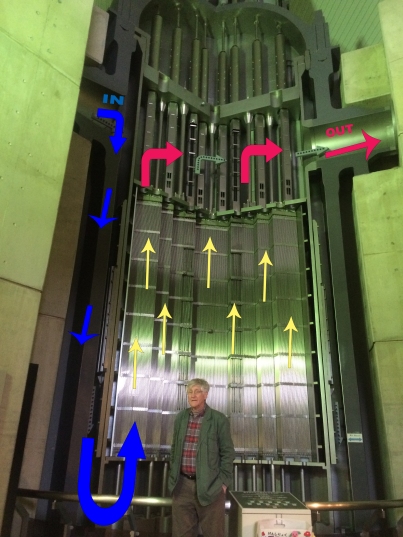
Arnie Gundersen and full sized mockup of properly working reactor.
The operating temperature of a reactor is about 700 degrees Fahrenheit, and the pressure is maintained at about 2,250 psi in order to keep the 300,000 gallons of superheated water in a liquid state. It is not a jumbo home water heater, and with that enormous pressure the water in the reactor core most resembles superheated, roiling concrete.
It is critical that there be a constant flow of water to avoid buildups of hot pockets around individual fuel rods. That is the function of the baffle former bolts, which hold a series of 13-foot baffles that line the core of the reactor and surround the fuel assemblies. A series of pumps, operating at even higher pressures, force some 300,000 gallons per minute of cooler water to flow down between the baffles and the wall of the reactor and come up through a series of openings and flow through the fuel assemblies to keep them in the optimal operating temperature.
The roiling, highly radioactive reactor water is pumped out of the reactor and into the steam generator, a massive heat exchanger featuring 3,260 U-shaped, thin steel tubes (http://bit.ly/RSxaiw ), and then flows back to the reactor. To avoid thermal stress, the NRC operating regulations dictate that the temperature difference between the “hot leg” coming out of the reactor and the “cool leg” returning to the reactor can’t exceed 72 degrees F. And when cooling down the reactor, the temperature can’t drop more than 100 degrees per hour.
The reactor water provides the first part of a 3-step process of generating electricity. The second step involves a “clean loop” of water which is forced over the steam generator tubes containing the superhot reactor water, and quickly turns to steam. This blows out to an adjacent building and through fans turning the massive, 40-ton turbine which generates electricity. The steam then passes through a reverse heat exchanger featuring cool water from the Hudson River. The steam condenses into hot water and is routed back to the steam generator to be reheated and repeat the process. The hot river water is dumped back into the Hudson, a process that kills more than a billion fish annually.
It is a system that is intricately designed, infinitely interwoven, and extremely efficient. There are sensors to monitor temperature changes in each fuel bundle; X-ray sensors to detect wear and tear on steam tubes; a Metal Impact Monitoring System to detect loose metal parts which can damage fuel rods or block a coolant stream from properly circulating; and a Reactor Coolant System Activity monitor to detect cracks in fuel rods.
In 2000 this efficient system went horribly wrong.
The Emergency
ConEd saved money by ignoring repairs. By Feb. 15,2000, there were more than 15,000 items on its “corrective action list” of major or minor items which had broken or malfunctioned and needed repair or replacement ( http://bit.ly/1SA7QLw ) . The NRC”s Augmented Inspection Ream report ( http://bit.ly/1WROTZD ) of April 28, 2000 notes: “the number and duration of the equipment problems reflected weaknesses in engineering, corrective action processes, and operational support at the Station. The Licensee’s response to a number of equipment problems identified during the event reflected an acceptance of ‘working around’ rather than fixing the problem.”
Indeed, workers in one area had to walk around holding a broom in front of them to detect thin jets of steam leaking from high pressure pipes that were hard to see but could cut through a person like a laser. If the broom’s brush suddenly shredded the workers knew where a leak was. On Feb 15 one of the eroded tubes within the steam generator burst, and the high pressure, hot, radioactive coolant coursing through it exploded into the “clean loop” destined for the generating turbine. That triggered a regional emergency alert.
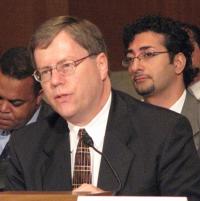
Lochbaum
According to the NRC report, Indian Point operators shut off the flow of water and steam to the turbine in an effort to isolate the break, and then had to find additional water to make up for the loss. Here, said David Lochbaum, nuclear safety engineer with the Union of Concerned Scientists, the operators turned to the 300,000 gallon storage tank sitting outside for emergency situations. (That tank system has been associated with last month’s leaks from Indian Point into the water table flowing into the Hudson River ( http://bit.ly/1Qd73lS ).
“You can’t heat up or cool down the system by more than 100 degrees per hour to control the expansion and contraction of the metal and to limit stress,” explained Lochbaum. “But during that event they cooled down faster than 100 degrees. It’s not like a cliff, where if you walk 101 feet you’re in thin air and falling to your death.
“But there are cumulative usage factors, and the more you violate the rules on heating up and shutting down the more damage you cause in the long term.”
Indian Point operators were apparently confused by bad readings from defective valves, which backed up some water in the system and provided inaccurate temperatures. As a result, plant operators were unable to inject and mix the proper amount of cool, outside water during the cooldown process.
“Just during normal operation,” said Lochbaum,” those bolts experience a lot of wear and tear. The Feb 2000 event got the NRC’s attention because they exceeded the cooldown rate and the wear and tear, in retrospect, may account for the reason the number of degraded bolts exceeds that found in any other plant.”
The NRC will also want to know why the metal detection system failed to detect the broken bolts floating around the core of Indian Point 2 or broken fuel rods at North Anna.
“How is it that fuel rods can degrade to the point where fuel pellets wander free in the reactor coolant yet the Reactor Coolant System Activity PI does not detect it?” asked Lochbaum. “Must the pellets leak out of the coolant system, walk up to the control room and knock on its door to get noticed?
“The detection system at North Anna worked like the Metal Impact Monitoring System at Indian Point, which was installed to detect loose metal parts banging around the reactor coolant system. But it does not detect metal parts from broken baffle bolts.”

Gundersen
And that, said Arnie Gundersen, a nuclear engineer and consultant to Friends of the Earth is why Indian Point 2 should remain shut until there has been a thorough understanding of all the factors involved in the baffle-bolt decay.
“Failure of more than a quarter of the bolts means the baffle was severely weakened and in jeopardy of failing,” Gundersen said in an interview. “It means a nuclear nightmare was just narrowly avoided since cooling water could have bypassed the atomic reactor core and led to a meltdown.
“Replacing the damaged baffle bolts prior to concluding a root cause analysis endangers the health of millions of people living nearby. Both plants should be shut down until it is understood if they both share a design flaw or if there is a problem peculiar to Indian Point 2.”
The Aftermath
Entergy is expected to deliver this week its Licensee Event Report delineating what it found, the probable causes and the steps the company is taking to correct the situation at Indian Point 2, said company spokeswoman Patricia Kakridas. But the company is under pressure to restart the plant in time for the summer, when electricity usage and wholesale prices are highest. Entergy bought the twin reactors when the state inaugurated deregulation and ConEd was forced to sell its various generating plants and become a transmission company carrying all of the electricity used in NYC and neighboring Westchester County.
As part of the sale, ConEd bought all of the output from Indian Point 2 for 7 years. NYPA had the same arrangement with Entergy for the output from Indian Point 3. But as the state’s grid manager, the Independent System Operator, added thousands of miles of new and upgraded transmission lines, it became easier to buy and sell electricity at competitive prices from vendors around the state. So both ConEd and NYPA – which provides electricity for municipal governments, the subways and airports, street lights, public schools and public housing – began reducing the amount of electricity they contracted from Indian Point. ConEd buys electricity from various vendors to provide electricity to some 3.5 million residential and 250,000 business customers.
In 2013 NYPA stopped buying any electricity from Indian Point and ConEd’s current contract is for just 560 of the twin reactors’ combined output of about 2,060 megawatts. That’s only about 5% of the average summer daily peak usage of 13,000 megawatts consumed by the 9 million residents and businesses in the New York City and Westchester County.
According to Julien Dumoulin-Smith, energy analyst with UBS, Entergy contracted to sell most of the remaining 1,500 megawatts of Indian Point’s output in the Mid-Hudson capacity zone which includes Orange, Ulster, and Duchess Counties.
At the start of deregulation Entergy Nuclear Northeast had five profitable nuclear plants. But nuclear power has difficulty competing in a free market with low-cost natural gas, wind, and solar. Now, Entergy has closed Vermont Yankee and is scheduled to close two more money-losing “zombie plants” – Pilgrim in Massachusetts and James FitzPatrick plant in Scriba, NY. Indian Point is its only remaining money maker. It is critical to the company’s viability to restart the plant in time to meet those contractual, money-making, summer obligations.
But that will be difficult .
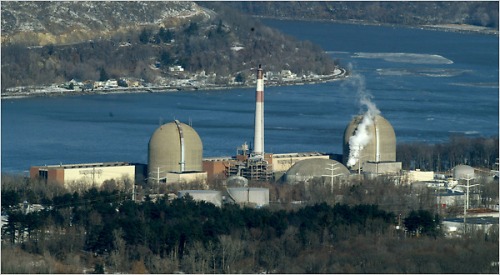




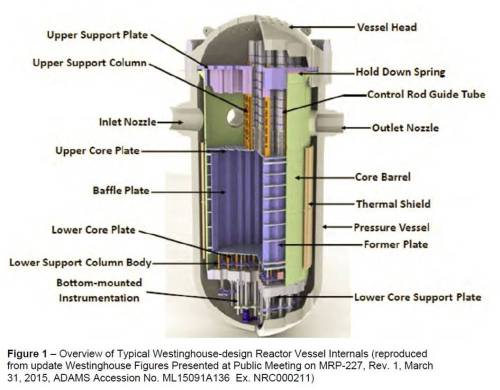
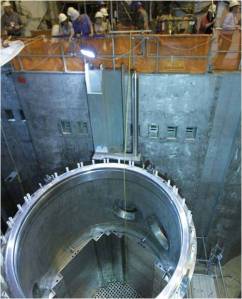
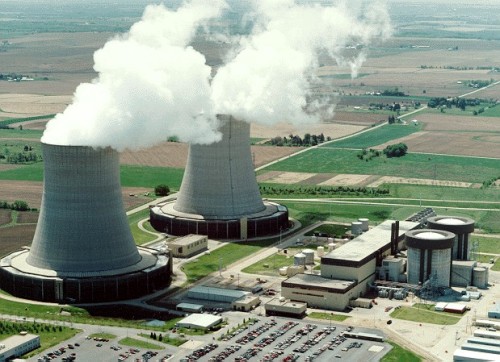
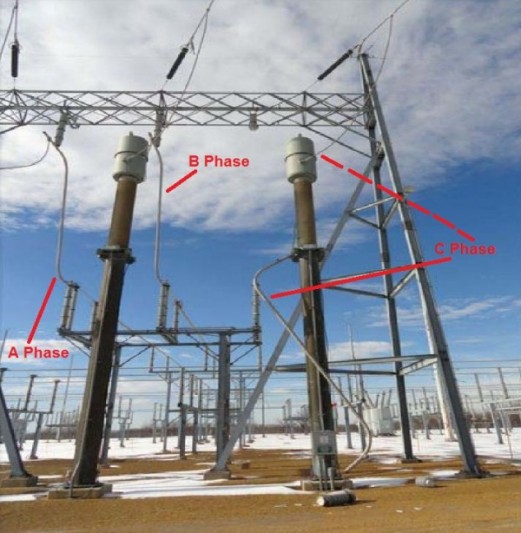
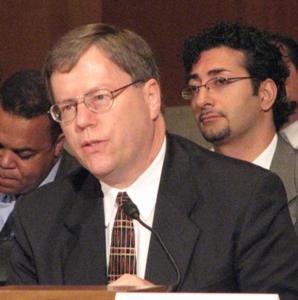
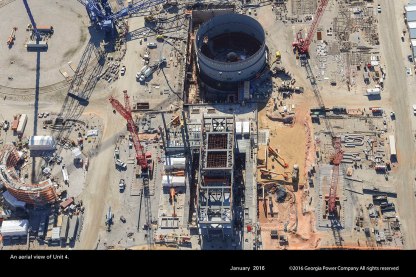



 Seeger founded Clearwater at a time when the Hudson was an industrial sewer, and dedicated the organization to fighting river pollution and restoring it to environmental health. Scaling back that level of involvement is causing friction among members.
Seeger founded Clearwater at a time when the Hudson was an industrial sewer, and dedicated the organization to fighting river pollution and restoring it to environmental health. Scaling back that level of involvement is causing friction among members.